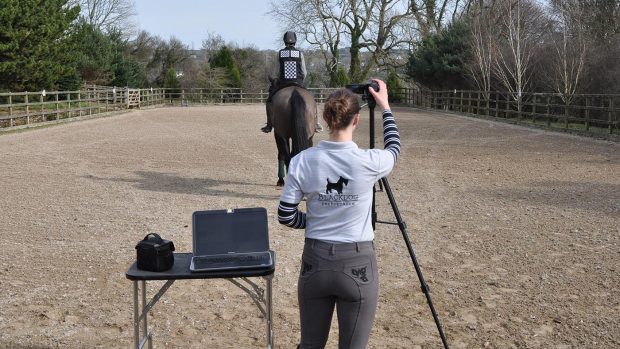Shivering, or shivers as it is also known, is a mysterious and poorly understood disease of the nervous system.
Farriers are probably most aware of the condition and know how common it is because horses that shiver can be difficult to shoe. Such horses have a tendency to snatch the limb up, or for the limb to quiver when it is lifted, which can make accurate fitting of shoes difficult.
Apart from problems during shoeing, a horse which is a shiverer may appear normal. In many cases, it may not actually affect their performance. The signs associated with shivering may vary enormously from case to case and from day to day.
The signs are inconsistent and can be easily undetectable on a one-off examination, which can make it very difficult to spot when accessing a horse before purchase.
The disease tends to start gradually, so that it may be obvious on one occasion and not there the next. This can lead to major problems at purchase as the horse may suddenly be seen to be a shiverer immediately after it has been sold.
Shivering is said to be progressive and may gradually become worse, however, I have seen many horses with mild shivering who have not shown any obviously deterioration over several years. There is no way of predicting if or when they will get worse.
Traditionally it is said that shiverers will be able to cope with flatwork, but their ability to jump will eventually be impaired. Yet certain competition horses have mild signs and cope with work without major difficulty. Some get better with rest and others recover spontaneously.
Problems arise short-term with shoeing and sometimes more long-term if the horse is sold. Technically, shivering is considered an “unsoundness” because of the uncertainty associated with it.
Breed societies are particularly concerned about shivering, as there is an unproven suspicion that the condition may be inherited. It seems to appear in certain breeding lines, with large, heavy adult horses, including draught horses, heavy hunters and warmbloods most commonly affected.
Signs of shivering
- Muscle twitching, particularly involving the hindlegs, pelvic area and tail. This may be seen as trembling or shivering in the limbs and holding the tail up.
- The shivering frequently worsens when the horse is backed or turned in tight circles
- Difficulty lifting up the legs, which is noticed when the horse is shod
- The horse may stand on its toes with its heels raised off the ground
- The forelegs are rarely involved, but occasionally an affected horse may stick out a front leg, or hold it bent at the knee and that leg will shiver
- Rarely, the head and neck may be involved, with the ear or lip twitching, the eye blinking rapidly or shivering of the neck muscles
- In severe cases, there may be muscle wastage related to the shivering episodes
- In between bouts of shivering the horse may seem absolutely normal
- Stress and excitement can occasionally trigger signs
- Some affect horses show signs when bought out of the stable in the morning, with signs becoming less obvious or even absent after exercise
- One or both hindlegs may be held off the ground and stuck stiffly out to the side as the muscles quiver, which can result in the horse falling over
This article, which also covered stringhalt and locking stifle problems, was originally published in the 31 October 2002 issue of Horse & Hound. To purchase a copy of this issue of the magazine (tel: 020 8532 3628).
|
||
 |
||


 Get up to 19 issues FREE
Get up to 19 issues FREE TO SUBSCRIBE
TO SUBSCRIBE 


